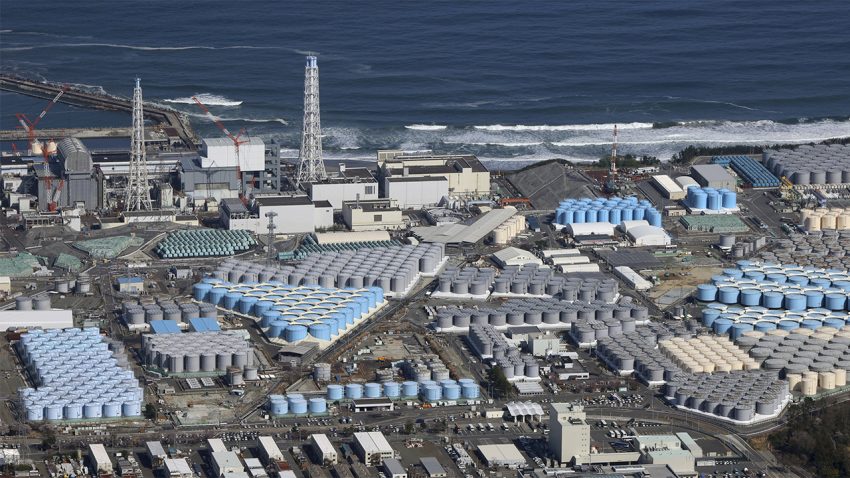Japan began releasing a second batch of treated radioactive water from the wrecked Fukushima No. 1 nuclear plant on Thursday, the plant’s operator said, as tensions with neighbouring countries over the move continue to fester.
The Japan Times reports that Tokyo Electric Power Company (Tepco) started the process at around 10:20 a.m.
“We would like to continue approaching this with the utmost caution,” Kenichi Takahara, a spokesperson for Tepco, said Thursday. “It is crucial to maintain a strong determination to safely proceed. … while making every effort to avoid causing dissatisfaction.”
Tepco has said it finished inspections after the initial release, which concluded on 11 September, saying it found no reason to alter procedures. In the first round, the company said a total of 7,788 tons of treated water, stored in 10 tanks within the plant’s premises, were safely diluted and discharged without any issues.
In the second round, roughly the same amount of water is set to be released over 17 days, the utility has said. Tepco has said that the treated water, which is stored in over 1,000 tanks, has undergone filtration to remove all radioactive elements except for tritium, which is at safe levels — a claim supported by the United Nations atomic agency.
Overall, the release of the water into the Pacific Ocean is expected to take three decades to complete. The discharge marks a major step in the decommissioning process for the plant, which suffered a triple meltdown following the March 2011 tsunami.
Following the announcement of the first release, China implemented a ban on all seafood imports from Japan, citing safety concerns. China has been the leading market for Japanese agricultural and marine products. Last year, Japan exported ¥87.1 billion (nearly US$600 million based on the exchange rates at the time) in marine products to China.
In the wake of the initial water release, Japan saw an immediate backlash. Thousands of harassing phone calls from Chinese phone numbers bombarded businesses, schools and government facilities across Japan — The Tokyo Metropolitan Government alone received 34,300 such calls toward the end of August.
Despite the ban on Japanese seafood imports, Chinese fishing boats reportedly continue to operate in the same areas as Japanese vessels.
Meanwhile, Russia, amid strained ties with Japan, is considering a similar move on seafood.
On Wednesday, Russian Foreign Ministry spokesperson Maria Zakharova criticised Japan, alleging a lack of transparency and a failure to provide full access to information regarding the water release.
“We and China have repeatedly urged the Japanese side to show transparency and provide all interested states with full access to all information about the discharge of water from the Fukushima-1 nuclear power plant,” Russian Foreign Ministry spokeswoman Zakharova said.
“Japan has not done this,” Zakharova said. “Japan has failed to properly respond to these issues and to guarantee the absence of a threat, including a long-term one.”
Following the initial water release, tritium levels in seawater and fish near the nuclear plant were measured by government officials but no detectable amount has been found.
The Fisheries Agency has been issuing nearly daily updates since the beginning of the initial water release, aiming to counteract any rumors regarding its environmental impact, both at home and abroad.
